Established 2002
Written and designed by Roy Shepherd. Special
thanks to my wonderful wife
Lucinda Shepherd, friend Robert Randell and various experts for their support.
Flint formation, uses and fossils
Lucinda Shepherd, friend Robert Randell and various experts for their support.
Flint formation, uses and fossils
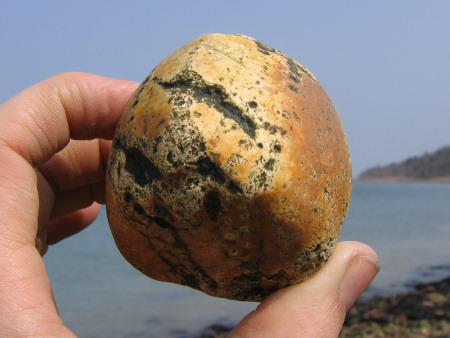
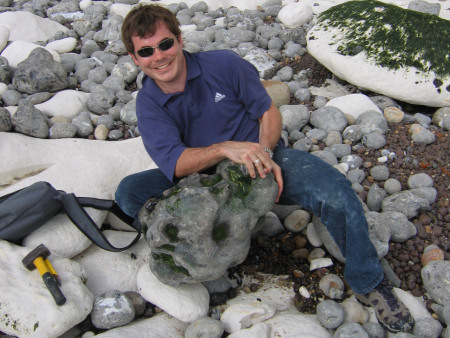
Left: A large flint echinoid (Echinocorys) from Bouldnor. Right: Propping up a large flint nodule on the foreshore at Seaford Head.
What is Flint?
Flint is comprised of Silicon - the second most common element on Earth. Flint can be found in a variety of shapes and sizes, ranging from small pebbles to large stones and even in thick sheets. Flint not only preserves the fossil evidence of former life, but has also been used in hunting and construction.
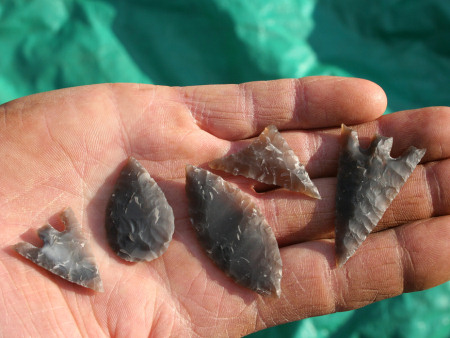
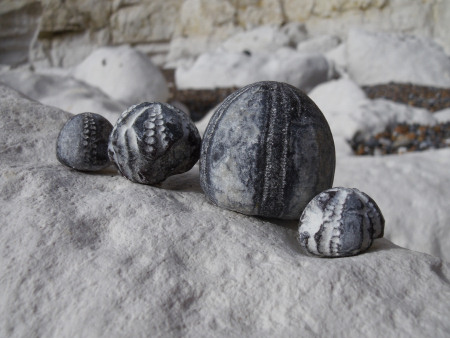
Left: A selection
of ancient arrowheads shaped from flint. Right: An
selection of small echinoids preserved as flint.


ADVERTISEMENT BY UKGE - OFFICIAL ADVERTISING PARTNER OF DISCOVERING FOSSILS
Humans have used flints for a very long time. Prehistoric tools were crafted/formed from it. These tools were and still are extremely sharp, in some cases even sharper than a modern surgeons knife! These valuable properties were utilised in a number of early disciplines including arrow-heads for hunting, as cutting tools, for preparing food and clothing, as axe-heads for working wood and, of course, weaponry.
Long after it was first used to provide tools, its durable qualities as a building material were recognised. Flint walls became a prominent part of the southern England landscape. The Romans also made use of the hardness and durability of flint in their roads and buildings, and local tradesmen used flint consistently up until the early-20th century in much the same way.
How did flint form?
The majority of silica found in flint nodules is biogenic (produced by living organisms or biological processes). Although today's flint nodules are inorganic, the silica that formed them was originally sourced from the remains of sea sponges and siliceous planktonic micro-organisms (diatoms, radiolarians) during the late cretaceous period (60-95 million years ago). Flints are concretions that grew within the sediment after its deposition by the precipitation of silica; filling burrows/cavities and enveloping the remains of marine creatures, before dehydrating and hardening into the microscopic quartz crystals which constitute flint.
Where can you find flint?
Flint is found in areas with chalk bedrock, this is because flint formed within the sediment that later became chalk. At this point it's worth noting that the chalk was formed in much larger quantities from the remains of microscopic calcareous plankton, particularly Coccolithophoroid algae, whose tiny skeletons are known as coccospheres. Upon death, trillions of these microscopic skeletons rained down on the sea floor, accumulating in layers of white ooze, often falling apart into their component pieces (coccoliths). This white ooze later hardened into chalk.
Over tens of millions of years, continental movements relating to the formation of the Alps resulted in gentle folding, uplift and erosion of the chalk, forming familiar geological structures such as the South Downs of Southern England. Over time the chalk hills have been eroded, exposing and depositing flint nodules as they retreat. These flints then accumulate to form the flints seen in fields and the characteristic flint pebble beaches along the coast.
Displacement of these flint deposits also occurs due to long-shore drift, resulting in flint beaches many miles from the chalk source. Recent ice ages have played their part, as former glaciers have transported thousands of tonnes of material to new locations.


ADVERTISEMENT BY UKGE - OFFICIAL ADVERTISING PARTNER OF DISCOVERING
FOSSILS
Flint fossils
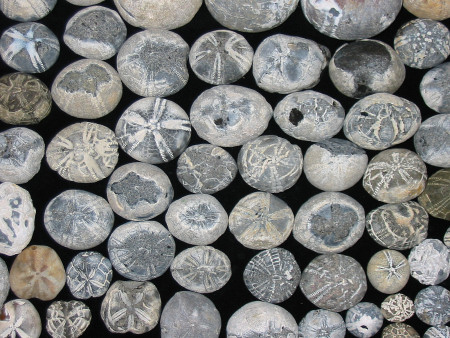
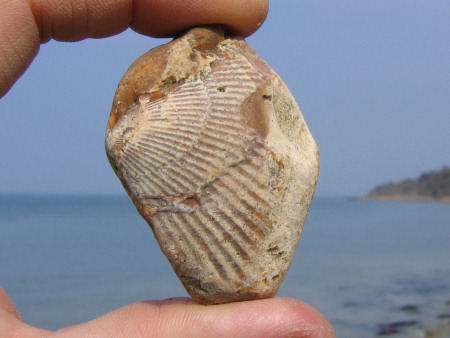
Left: A large
selection of flint fossil echinoids found at
Littlehampton.
Right: A fossil bivalve visible on the surface of
a flint nodule from
Bouldnor.
A wide range of fossils can be found within flint nodules, indeed in many instances the nodule itself is in fact an internal mould of a sea creature.
The silica accreted around the nuclei of organic remains and biogenic structures, such as the remains of sponges or the burrows of crustaceans. Therefore the flint fossils you find reflect the diversity of life and the activities of creatures on the seafloor at that time. Among the most commonly found flint fossils include sponges, echinoids, shells and of course trace fossils i.e. burrows.
Pseudo flint fossils
Flints nodules are often mistaken for fossils. Since Discovering Fossils was launched we've received countless emails from visitors claiming to have discovered a variety fossilised objects. Among the best includes a 'fossilised human foot', a 'man's arm' and a 'goat trotter'! None of these were in fact fossils strictly speaking, instead what they had discovered were flint nodules that had formed to resemble such objects (pseudo fossils). However it is likely that these objects were trace fossils, such as lobster burrows. In these instances the silica would have filled and overgrown the creature's burrow, thus forming a flint copy of the structure.
Join us on a fossil hunt
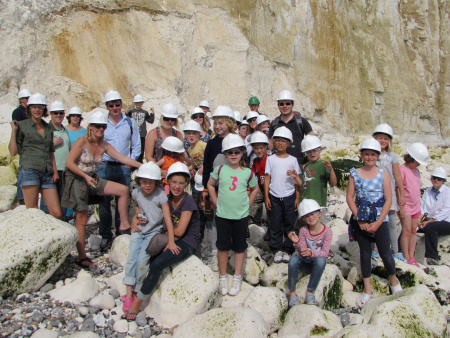
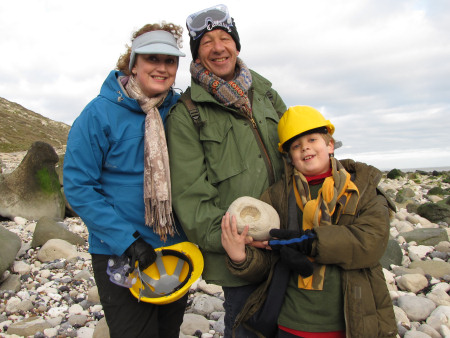
Left: A birthday party with
a twist - fossil hunting at
Peacehaven.
Right: A family hold their prized ammonite at Beachy Head.
Discovering Fossils guided fossil hunts reveal evidence of life that existed millions of years ago. Whether it's your first time fossil hunting or you're looking to expand your subject knowledge, our fossil hunts provide an enjoyable and educational experience for all. To find out more CLICK HERE




